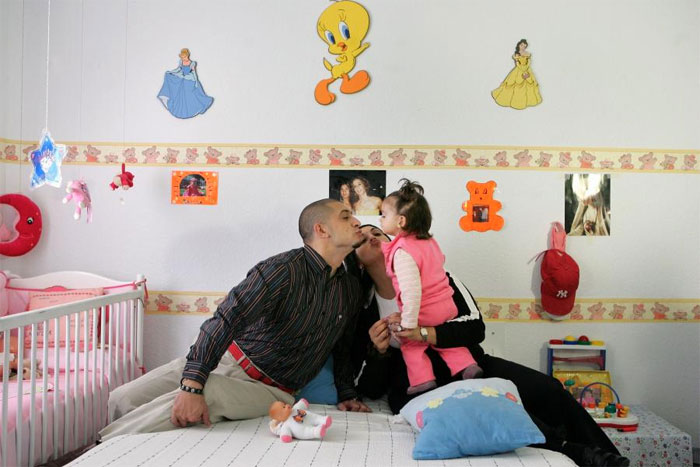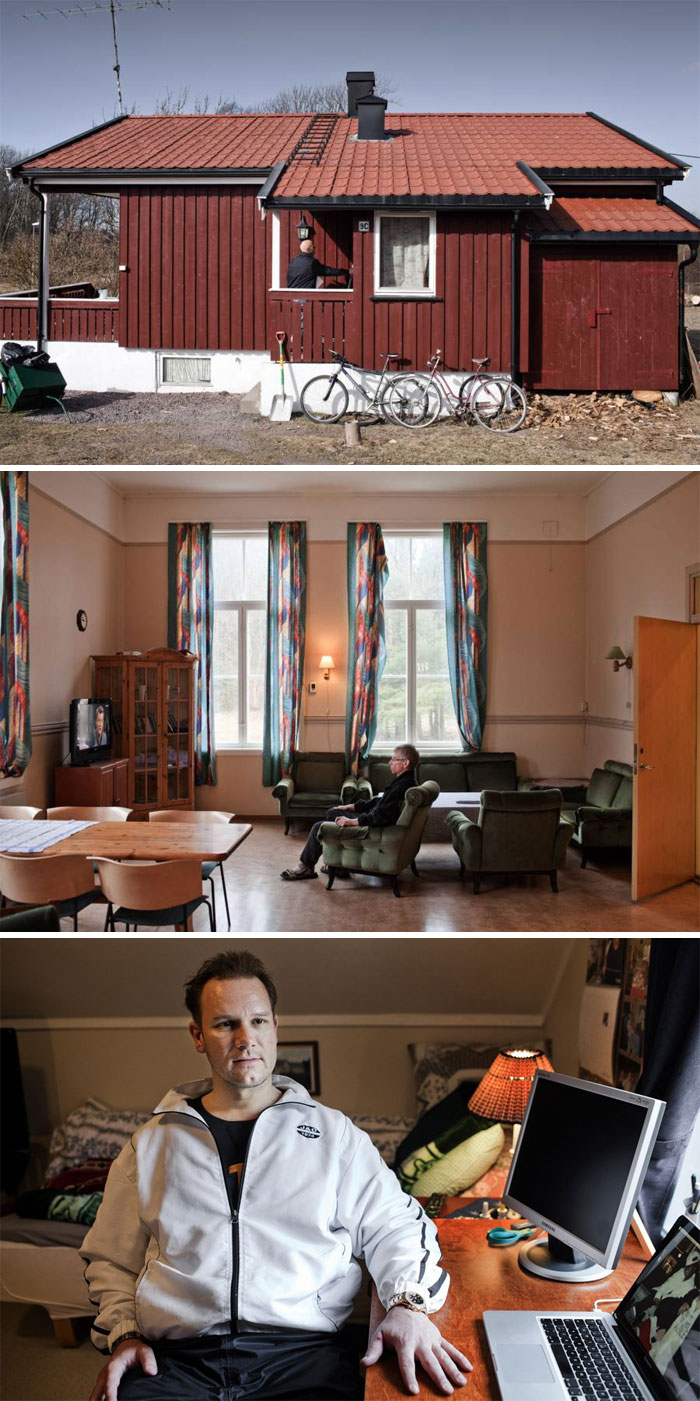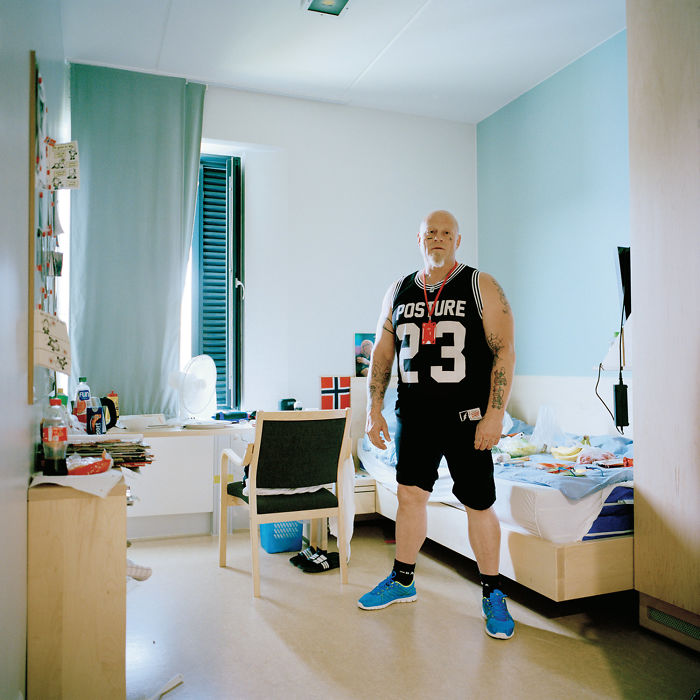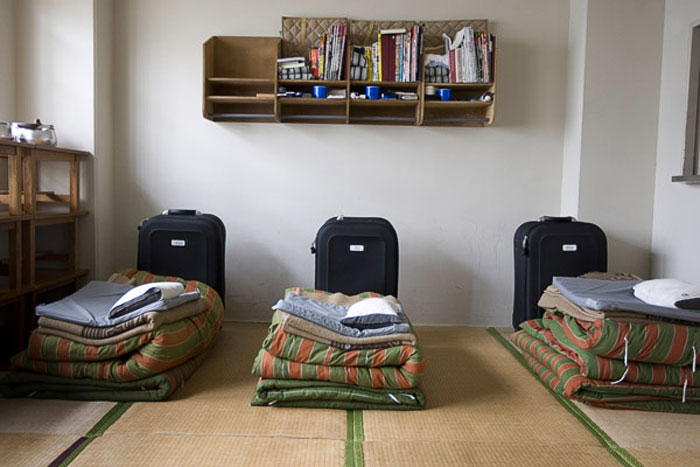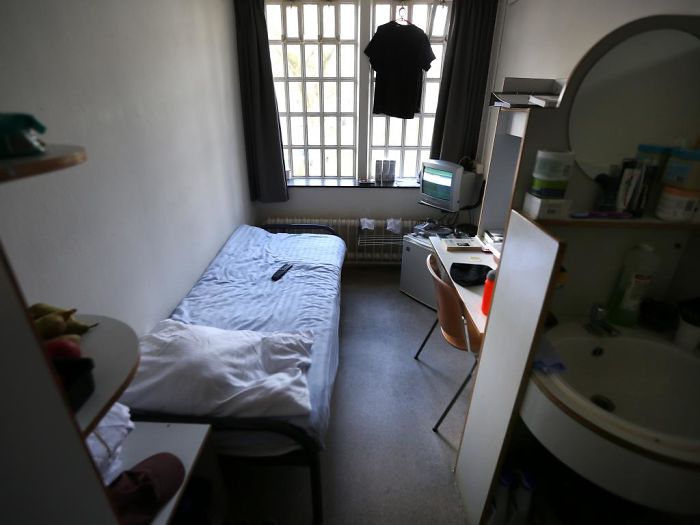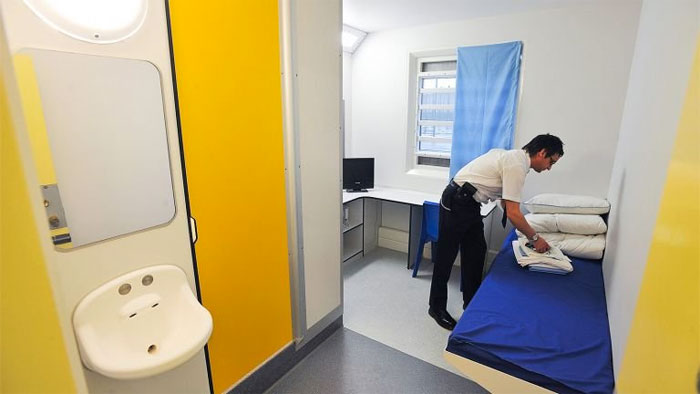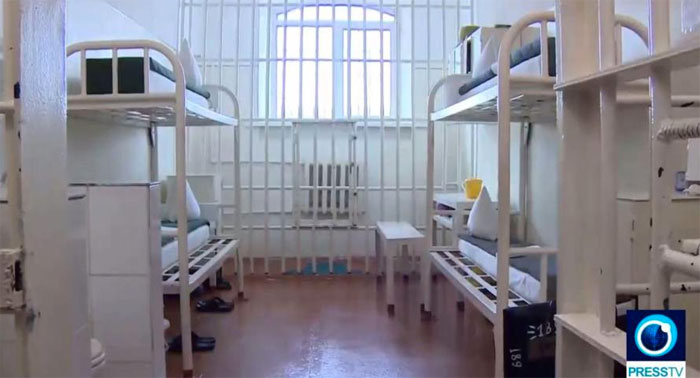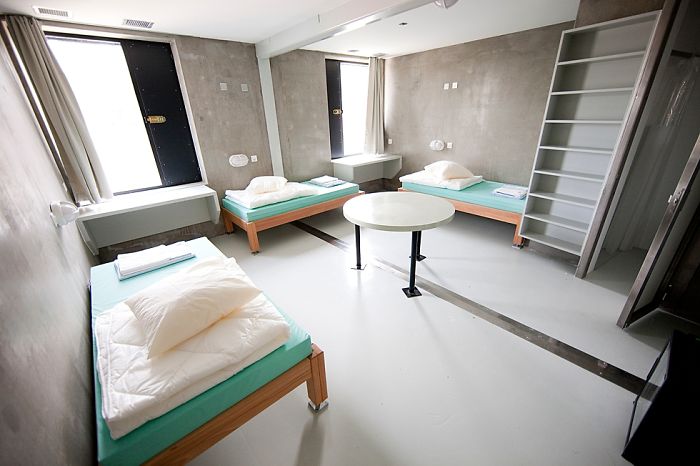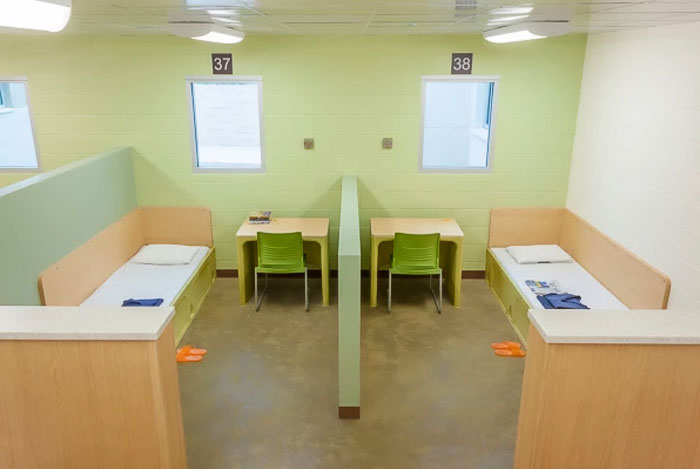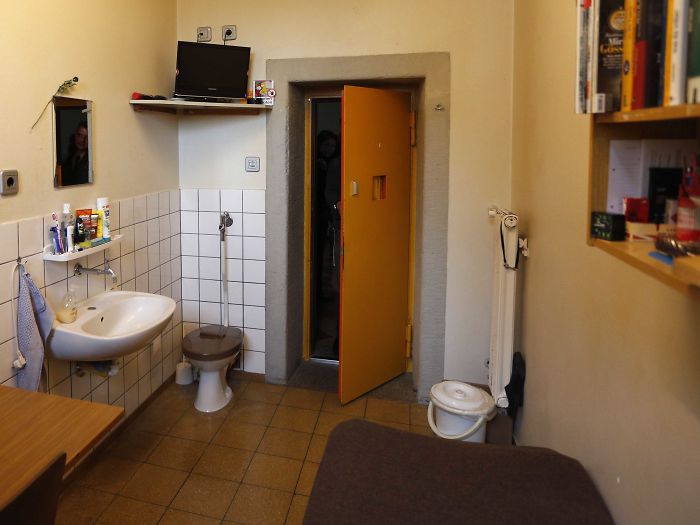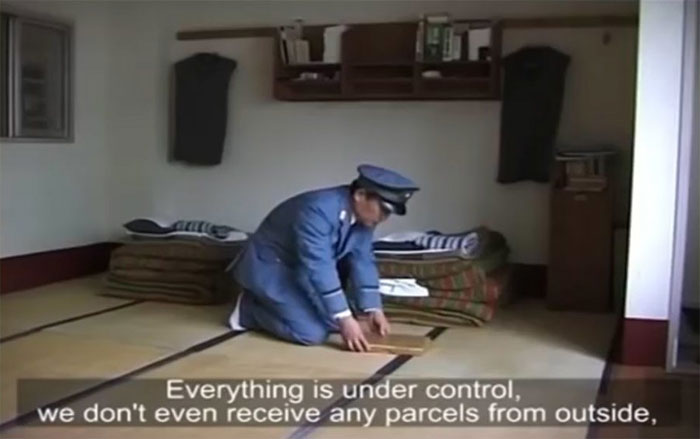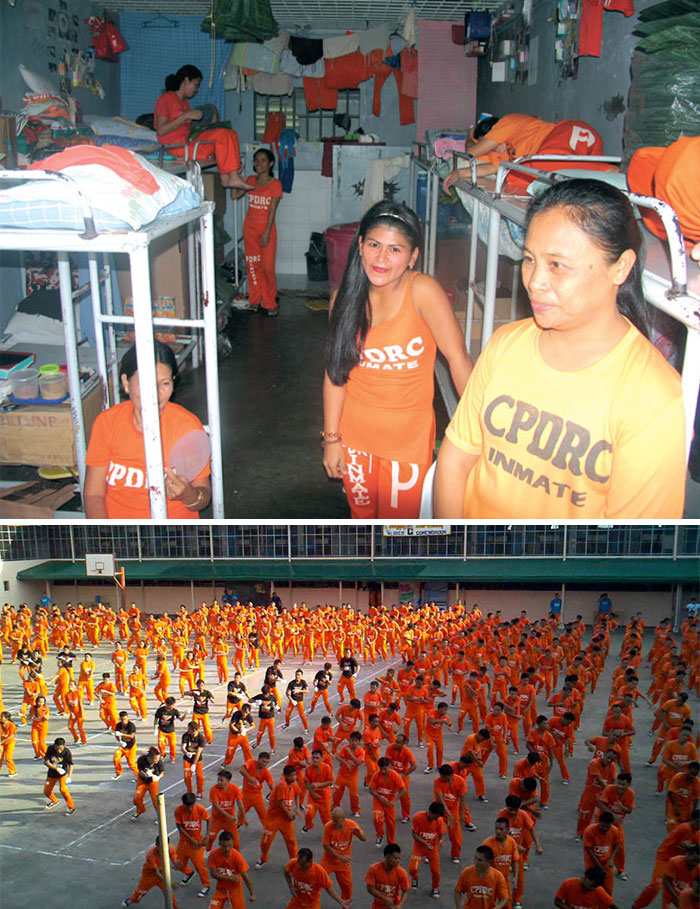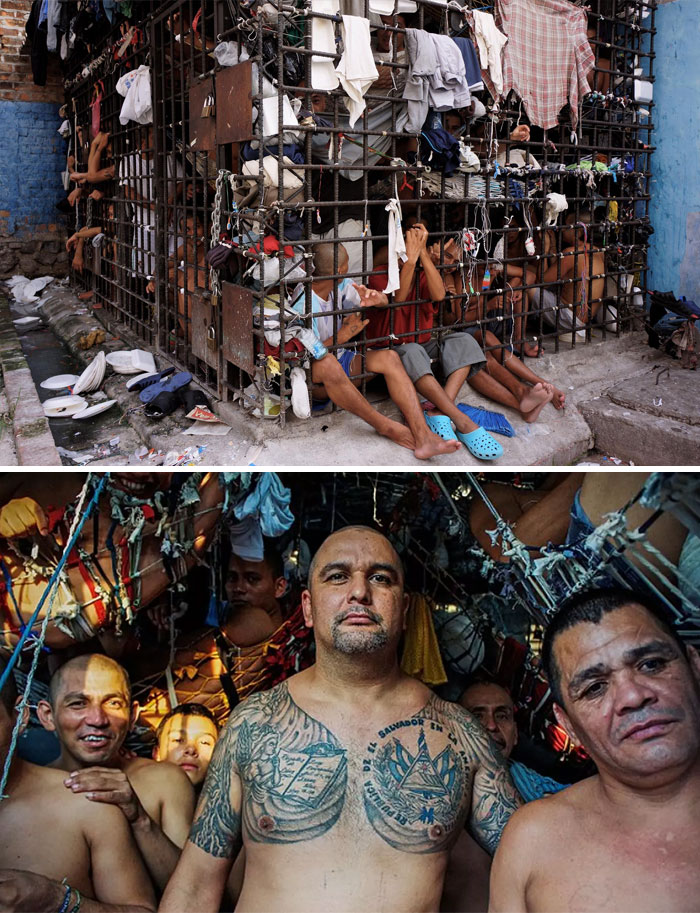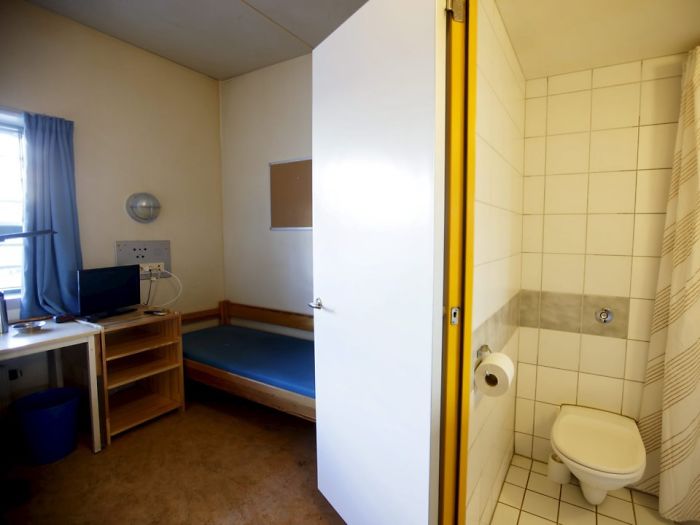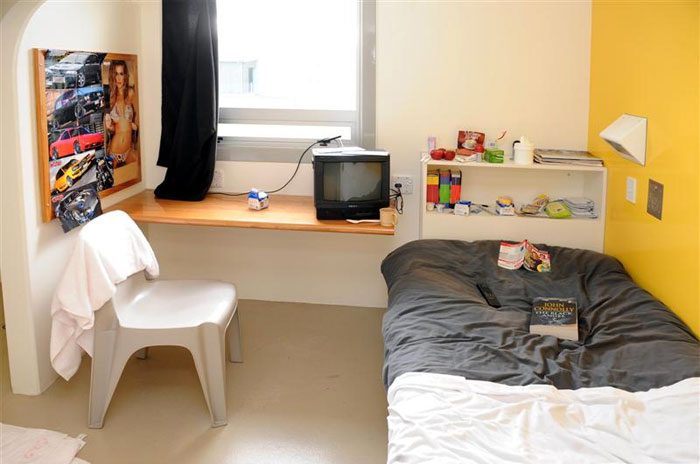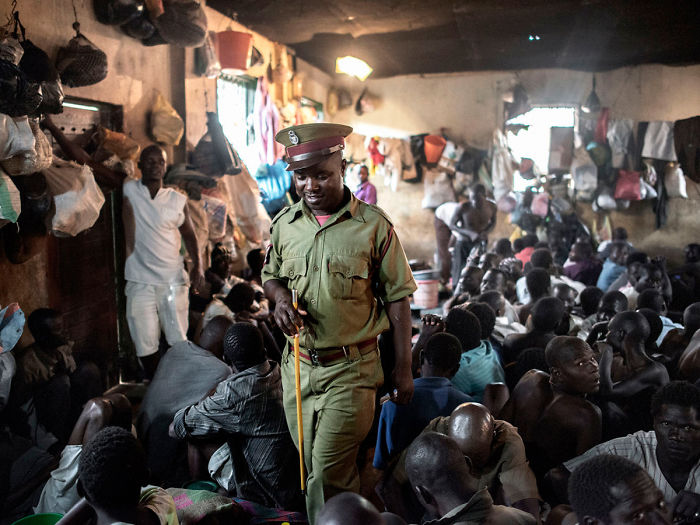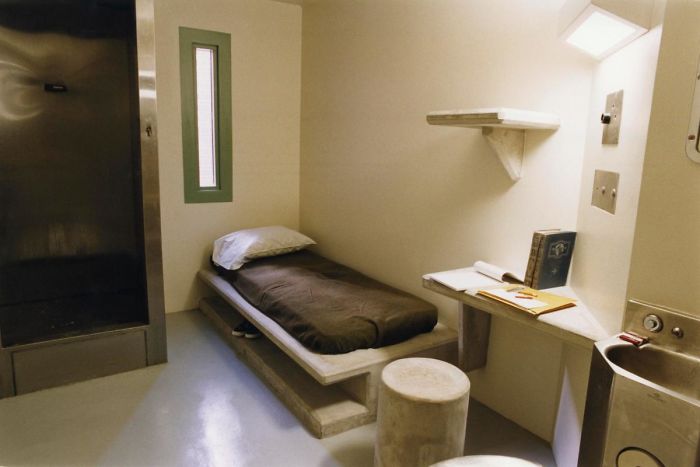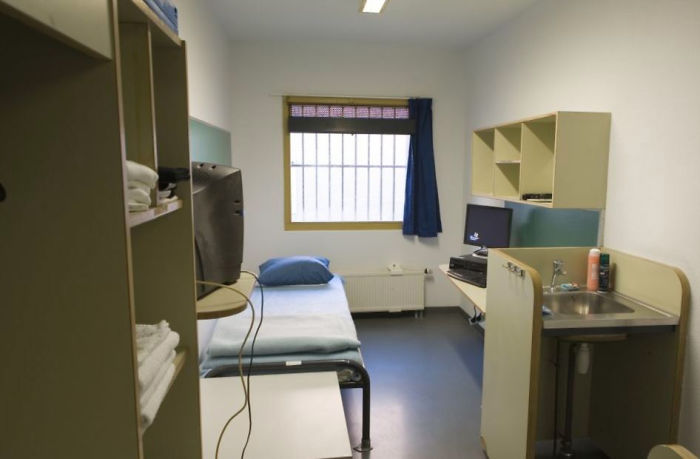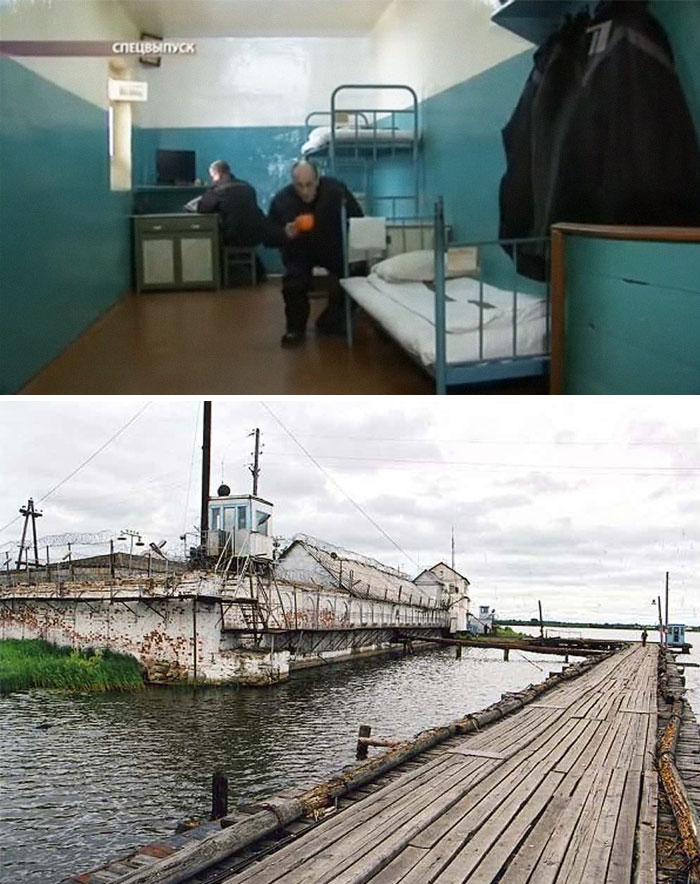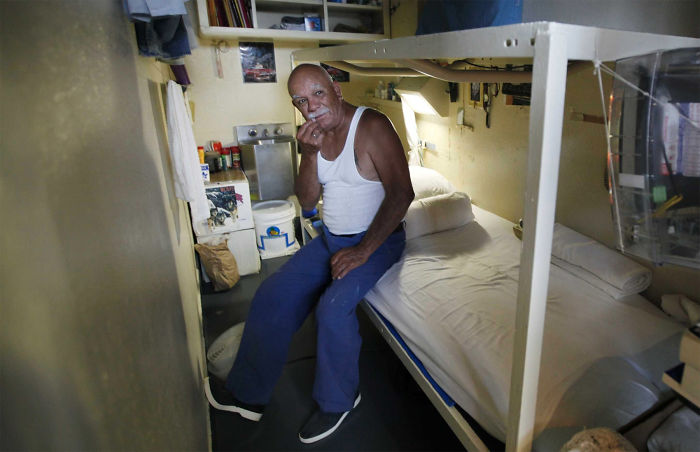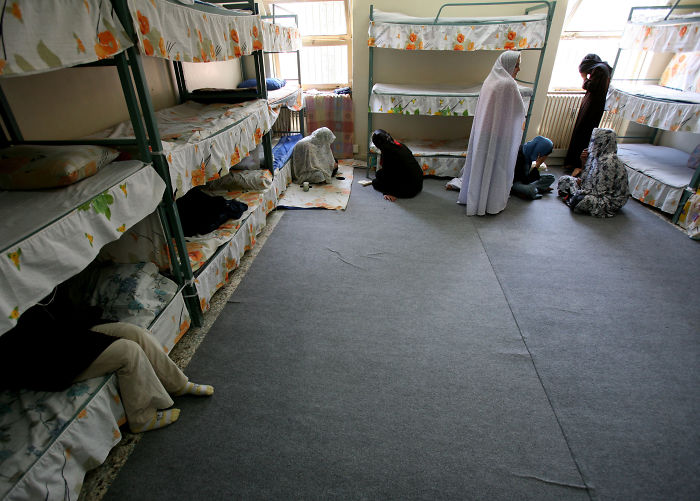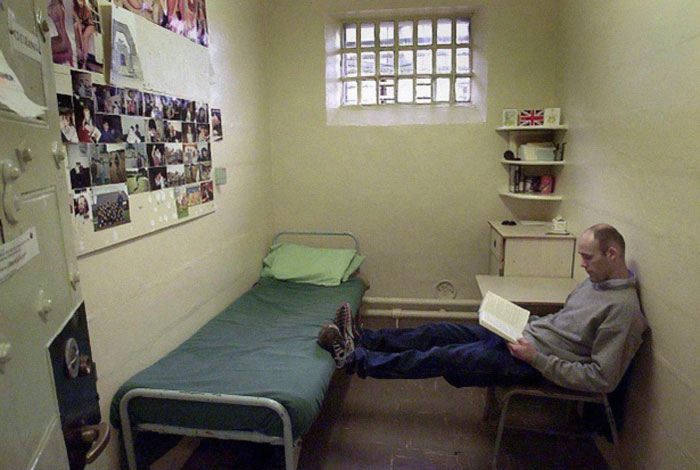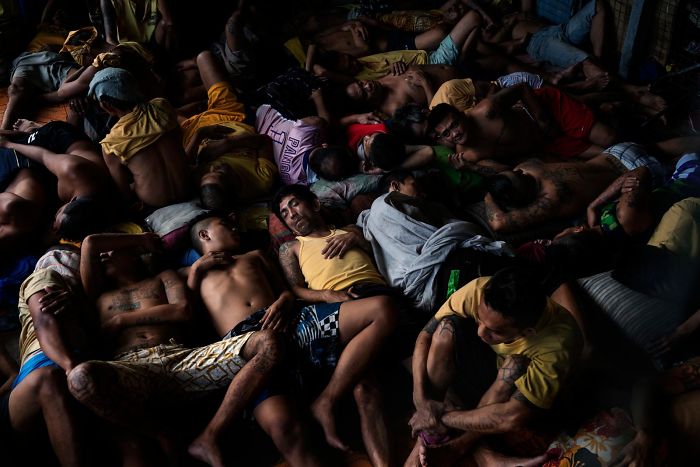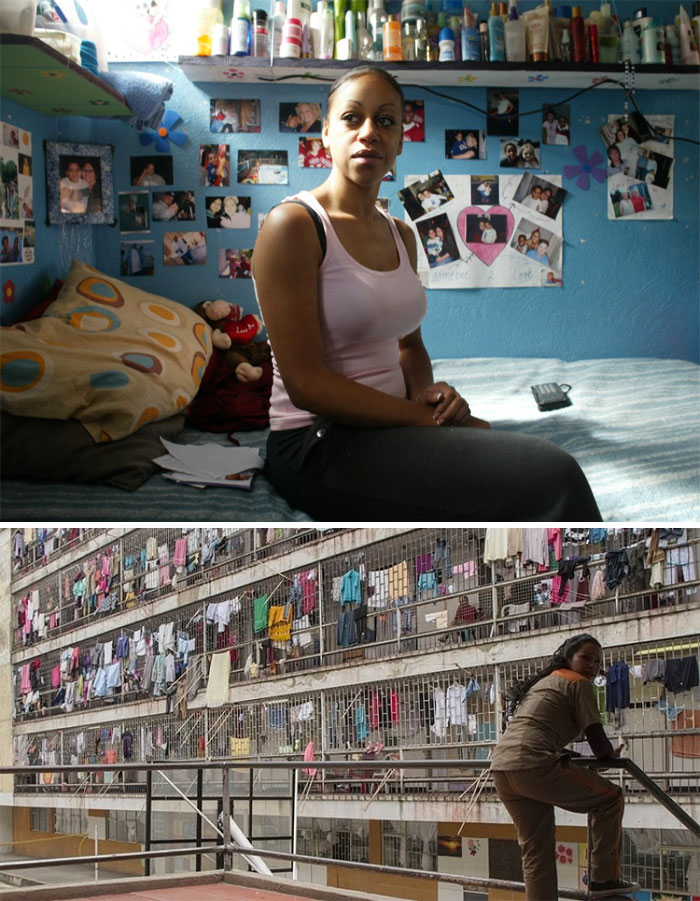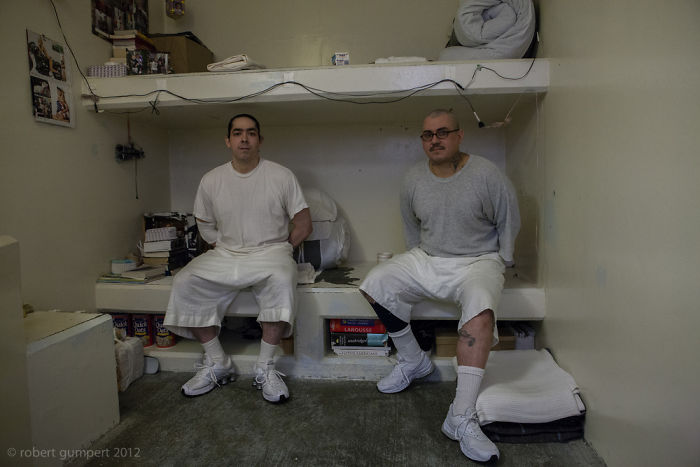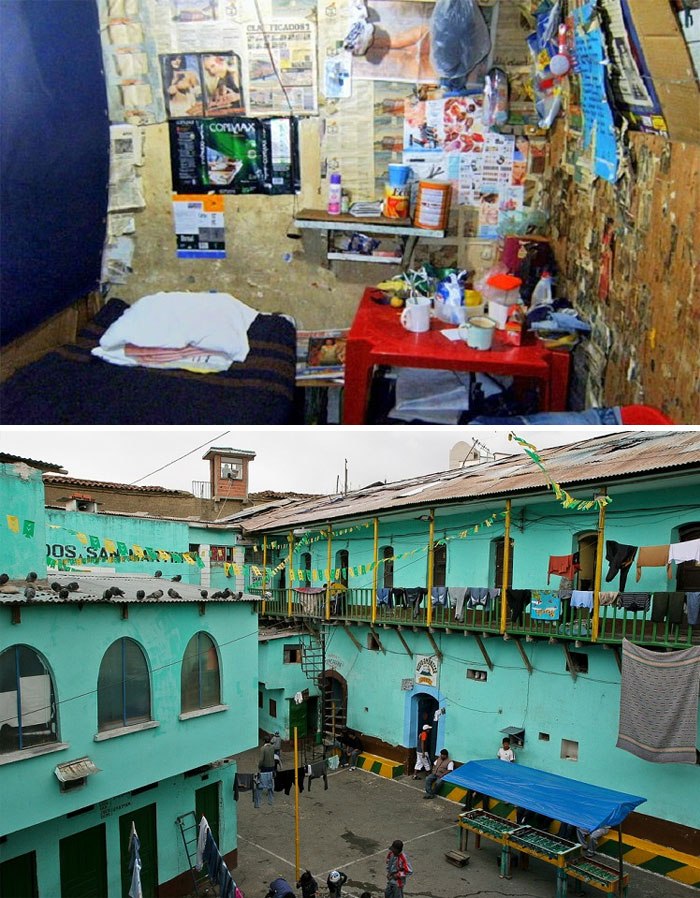How different countries have different kind of prison cells. Some of them look like college rooms!
So far when we heard the word prison, our stomach cringed or felt a bad feeling. Nothing about prison sounds good or looks good.”You cannot talk to whoever you want as long as you want” or “you can wear “prison clothing” only” are some of the most common rules you have to follow. Until few years ago when somebody went to prison, automatically, he knew that his freedom was gone the minute he walked in. But this is not the case with every prison that exist in this world.
Some countries have made prisons look like college rooms and feel like home or a healing center. On the other hand there are still countries that have prison that look like bird cages with 50 people inside with no personal space . A prison nobody wants to end up for sure.
This list it gives us a pretty good sense of how different countries deal with criminals.
#1 Aranjuez Prison, Aranjuez, Spain
Spain’s Aranjuez Prison lets parents and children stay with their incarcerated family members. With Disney characters on the walls, a nursery, and a playground, the goal is to prevent kids from realizing, as long as possible, that a parent is behind bars
2 Luzira Prison, Kampala, Uganda
In Luzira, inmates are assigned more responsibility that would be in similar prisons in the United Kingdom or the USA. Inmates assume responsibility for maintenance of harmony and functionality of the units where they live, including the growing and harvesting of food, its preparation and its distribution within the prison. Learning is encouraged, with many men learning and teaching carpentry skills to others. The guard to prisoner ration in Luzira is about 1:35, compared to 1:15 in the UK. Aggression among inmates is the exception and not the rule. The recidivism rate in Luzira is less than 30 percent, compared with 46 percent in the UK and 76 percent in the United States
3 Bastøy Prison, Horten, Norway
Bastøy prison is the largest low-security prison in Norway. The prison is located at Bastøy island in the Oslo Fiord, belonging to Horten municipality. The prison uses the whole island, but the northern part with the beach Nordbukta is defined as open to the public. The prison is organized as a small local community with about 80 buildings, roads, beach zones, cultural landscape, football field, agricultural land and forest. In addition to the prison functions, there is a shop, library, information office, health services, church, school, NAV (government social services), dock, ferry service (with its own shipping agency) and a lighthouse with facilities to let for smaller meetings and seminars. On Bastoy prison island, the prisoners, some of whom are murderers and rapists, live in conditions that critics brand ‘cushy’ and ‘luxurious’. Yet it has by far the lowest reoffending rate in Europe
4 Halden Prison, Halden, Norway
Halden Prison is a maximum-security prison in Halden, Norway. It has three main units and receives prisoners from all over the world, but has no conventional security devices. The second-largest prison in Norway, it was established in 2010 with a focus on rehabilitation; its design simulates life outside the prison. Among other activities, sports and music are available to the prisoners, who interact with the unarmed staff to create a sense of community. Praised for its humane conditions, Halden Prison has received the Arnstein Arneberg Award for its interior design in 2010 and been the subject of a documentary, but has also received criticism for being too liberal.
5 Onomichi Prison, Onomichi, Japan
Elderly prisons are becoming more common in Japan as the country continues to age. Onomichi Prison hosts an all-senior population. Inmates have access to handrails, soft food, and spend their working hours knitting and sewing
6 Norgerhaven Prison, Veenhuizen, Netherlands
Inmates at the Norgerhaven prison in Veenhuizen, Netherlands, have a bed, furniture, a refrigerator, and a TV in their cells, as well as a private bathroom. The crime rates in the Netherlands are so low, that they faced an “undercrowding” crisis. To solve this “problem”, the country struck a deal with Norway in 2015, to take on their prison overflow. Now part of Norwegian inmates serve their sentences in Norgerhaven.
7 HMP Addiewell, Lothian, Scotland
HMP Addiewell is a learning prison, where residents can address their offending behaviour and the circumstances which led to their imprisonment through Purposeful Activity. Purposeful activities include education, counseling and work. Nature and family contact whilst in prison is also a fundamental element of the rehabilitation process.
8 Black Dolphin Prison, Sol-Iletsk, Russia
At Russia’s notorious Black Dolphin Prison on the border of Kazakhstan, inmates share small 50-square-foot cells that are set back behind three sets of steel doors. Inmates live in a “cell within a cell”, with 24-hour surveillance. Black Dolphin houses the most brutal criminals, including serial killers, cannibals, and terrorists. A prison lieutenant told National Geographic, which did a documentary on the facility, that the only way to escape is by dying. If you combine all the crimes of the inmates, they have killed about 3,500 people. That’s an average of five murders per inmate.
9 Champ-Dollon Prison, Geneva, Switzerland
Opened in 1977, the main function of Geneva’s Champ-Dollon prison is to hold prisoners before trial and sentencing. The numbers of inmates is constantly increasing, which has lead to a chronic problem of overcrowding. 115 different nationalities were represented in the prison in 2010 with just 7.2% Swiss.
10 The Las Colinas Detention And Reentry Facility, Santee, California
The prison was designed to be the first detention facility of its kind in the U.S. where environmental and behavioral psychology are used to “improve the experience and behavior of both inmates and staff”
11 Landsberg Prison, Landsberg Am Lech, Germany
This is the prison where Hitler wrote “Mein Kampf,” and 278 Nazis were executed for war crimes. Nowadays, the conditions are considerably better at Landsberg. The progressive prison provides 36 courses in their central training centre for occupations such as bakers, electricians, painters, butchers, carpenters, tailors, shoemakers, heating & ventilation workers and bricklayers.
12 Abashiri Prison, Abashiri, Japan
At Abashiri Prison in Japan, guards inspect inmates’ rooms once a day. The prison houses offenders with sentences of 8 years or less. Life inside is very strict, however there’s no record of gang violence, rape, drugs or murder at the prison. Abashiri has a souvenir shop in front of the main gate, where they sell goods made inside the prison. Items sold range from Abashiri Prison Candy to all sorts of hand-made craft work.
13 Cebu Provincial Detention And Rehabilitation Center (CPDRC), Cebu, Cebu Province, Philippines
CPDRC is a maximum security prison where the prisoners perform dance routines as part of their daily exercise and rehabilitation, and many of their performances are filmed and released online, making them a popular feature among fans and veritable online celebrities
14 Penal De Ciudad Barrios, Ciudad Barrios, San Miguel, El Salvador
These cells are just 12 feet wide and 15 feet tall, but they’re usually packed with more than 30 people. They were initially constructed to serve as 72-hour holding cells, but many inmates stay for more than a year. Most of their days are spent pulling apart their clothes and using the thread to sew together hammocks, where they sleep stacked on top of one another like cords of wood.
15 Oslo’s Skien Prison, Oslo, Norway
Prisons in Norway are meant to mimic outside conditions as much as possible to prepare inmates to reenter society. At Oslo’s Skien prison, inmates have private bathrooms, a TV, video games and access to a gym and yard. Mass murderer Anders Breivik is currently serving his 21 year sentence there. He tried to sue the state over “cruel” conditions in 2016, however, this man’s prison life would seem luxurious to most people – his cell has three rooms, “one for living, one for studying, and a third for physical exercise — as well as a television, a computer without internet access and a game console. He is able to prepare his own food and do his own laundry.”
16 Otago Corrections Facility, Milburn, New Zealand
It has been dubbed the “Milton Hilton” – a place where prisoners can relax in ultimate luxury while they do their time. The Otago Corrections Facility in New Zealand looks more like a teenager’s bedroom than a prison. There are health facilities and a library designed to keep people feeling like members of society.
17 The Maula Prison, Lilongwe, Malawi
The Maula prison in Lilongwe, Malawi, is severely overcrowded — in 2015, almost 200 people were crammed into one 60-person cell. Prisoners there, many of whom are Ethiopian migrants, must share one toilet per 120 people and one tap per 900 people. Prisoners are fed just once a day, due to the small budget of the Malawian government. One of a few highlights for the inmates is sports. Men are permitted to play football and women can play basketball.
18 ADX Florence, Colorado, United States
US Penitentiary Administrative Maximum, also known as ADX Florence, the “Alcatraz of the Rockies,” and “Supermax,” is a modern super-maximum security federal prison located in the foothills of the Rocky Mountains near Florence, Colorado. Opened in 1994, the ADX Supermax facility was designed to incarcerate and isolate criminals deemed as being too dangerous for the average prison system. The majority of prisoners are kept in administrative segregation. They are confined to a specifically designed single-person cell for 23 hours a day. Prisoners are moved around under strict restraints (handcuffed, shackled or both), for their 1 hour time out, which includes showers, exercise, and with privileges, phone calls. Served in their cell, their meals are restricted to foods that can’t be used to harm themselves, or create unhygienic conditions.
19 Haiti’s Civil Prison, Arcahaie, Haiti
The United Nations Detention Unit (UNDU) is a UN-administered jail. It was established in 1993 as part of the International Criminal Tribunal for the former Yugoslavia. The facility now serves as the International Criminal Court detention centre, where individuals are prosecuted for the international crimes of genocide, crimes against humanity, and war crimes. The jail houses the detained suspects during their trial and those convicted by the court serving prison sentences. Each cell has it’s own toilet and washing area. Inmates have access to a gym and a PE instructor, they can also cook for themselves. A personal computer is provided in each cell, where inmates can view material on their cases.
20 Petak Island Prison, Vologda, Russia
Often referred to as the “Alcatraz of Russia,” Petak Island holds Russia’s most dangerous criminals. Aside from the mental torture of 22.5-hour-a-day lockdowns in two-man rooms, most prisoners are allowed just two visitors per year. And that’s all the inmates can ever hope for, as the prison itself is hopelessly inescapable, surrounded by the freezing waters of White Lake.
21 San Quentin State Prison, San Quentin, California
San Quentin State Prison is the oldest prison (Opened in July 1852) in California. It’s a maximum-security facility that once housed Charles Manson. Men condemned to death in California must (with some exceptions) be held at San Quentin. It’s the state’s only death row for male inmates, the largest in the United States. In 2001, San Quentin’s death row was described as “the largest in the Western Hemisphere”; and in 2005, it was referred to as, “the most populous execution antechamber in the United States. The “death row” prison count, as of December 2015, was 708 male inmates.
22 Evin Prison, Tehran, Iran
Although the Iranian regime has continuously denied it, Evin Prison is known to be a virtual torture factory, where countless numbers of inmates have met their fate. Due to the number of intellectuals imprisoned within its walls, the prison has been nicknamed Evin University. The prison is extremely overcrowded, hygiene is poor and in Iran’s sweltering hot summers, the temperature can reach up to 45 degrees Celsius. There is no form of air conditioning, and the air within cells becomes rank with sweat and human waste. Water quality is bad and barely edible food comes in meagre portions. Medical facilities are virtually non-existent. The whole process is designed to break the resolve of political prisoners, where pressure for a confession continues until the captive breaks their silence. To add to all the anguish, contact with the outside world is completely cut off. Family visits and telephone calls are forbidden, and even the guards are ordered to be silent.
23 HM Prison Dartmoor, Princetown, England
Dartmoor still has a misplaced reputation for being a high-security prison that is escape-proof. As a Category C prison, Dartmoor houses mainly non-violent offenders and white-collar criminals. It also holds sex offenders and offers sex offender treatment programmes intended to make the offender realise their behaviour is unacceptable. Some inmates subsequently volunteer for behaviour-changing treatment with medication under a scheme being piloted at HMP Whatton, which has had encouraging results.
24 Quezon City Jail, Quezon City, Philippines
Inside Quezon City jail in Manila, the capital of the Philippines, there is a relentless and constant battle for space, water, and food in an unhygienic facility. With 160 to 200 inmates crammed into a cell built for 20, men take turns sleeping on the cracked cement floor of an open-air basketball court, the steps of staircases, underneath beds and hammocks made out of old blankets
25 El Buen Pastor Women’s Prison, Bogota, Colombia
The El Buen Pastor women’s prison in Bogota, Colombia contains cells that were designed to house 2 inmates but now house anywhere between 10 to 20 women. Corruption and violence is prominent amongst prisoners. Despite harsh conditions, El Buen Pastor makes attempts to humanize its inmates by a holding an annual beauty pageant and parade.
26 Pelican Bay State Prison, Crescent City, California
Pelican Bay State Prison’s primary purpose is to house the “worst of the worst” violent male prisoners from the California state prison system. 40% of Pelican State’s inmates are serving life sentences and nearly all have histories of violence at other California prisons which resulted in their transfer to Pelican Bay. The sole exception are the institution’s minimum security inmates who work as part of the prison’s outside maintenance and firefighter programs.8
27 San Pedro Prison, La Paz, Bolivia
San Pedro prison is guarded by police officers rather than a hired civilian force, guards are only concerned with keeping inmates confined in the prison. The order inside prison is kept by elected leaders, commonly through stabbing. Inmates must purchase their own cells from other inmates. The wealthiest ones live in area called “La Posta”, which provides inmates with private bathrooms, a kitchen, and cable television, such cells are sold for around $1,500-1,800 Bolivianos. Wealthiest inmates can buy luxury cells that may include three floors and a hot tub. However, most of those inside the prison live in cramped conditions with it being common for single-room cells to accommodate five people. A lot of inmates live with their families because it’s believed to be safer inside the prison than on the impoverished streets. Cocaine is produced inside the compound, a lot of inmates make a living by selling it to tourists, Although tourism in the prison is illegal, many people gain access to a tour by bribing the guards.


